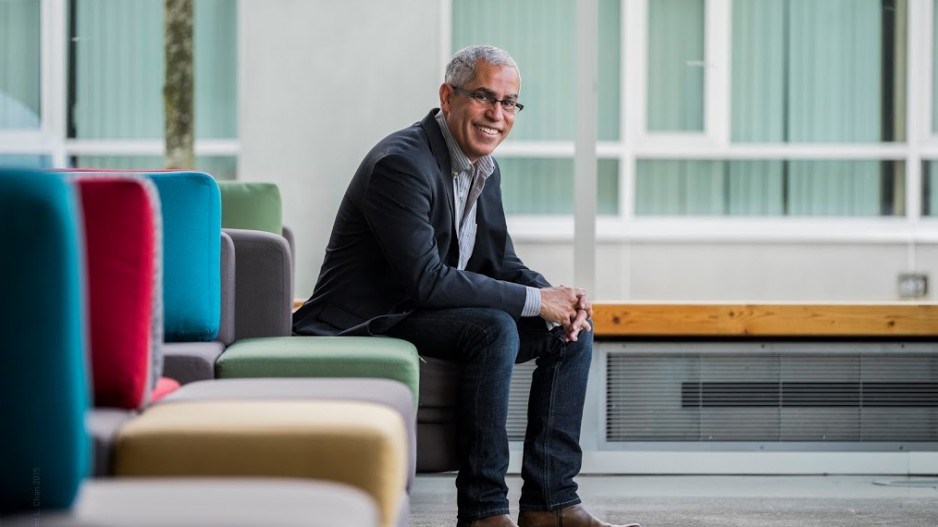B.C. continues its reign as Canada’s top choice for foreign students.
While domestic enrolment numbers across the Lower Mainland’s top universities have flatlined, international students are flocking to schools across the province in record numbers. According to a study by the provincial government, one-third of all international students who come to Canada to attend public and private K-12 schools and post-secondary institutions choose British Columbia.
Kwantlen Polytechnic University (KPU) is one of the schools reaping the direct benefit of international attention. With 8,990 students, KPU is B.C.’s fourth-largest university for full-time undergraduate enrolment, behind the University of British Columbia (35,070), the University of Victoria (14,220) and Simon Fraser University (12,880), and has posted an increase in international students for more than five consecutive years. During the 2010-11 school year, KPU had 1,340 international students, and by the 2015-16 year that number had reached 2,291. The school has four main campuses (Richmond, Surrey, Langley and KPU Tech in Cloverdale) spread across 42 square kilometres.
Salvador Ferreras, KPU’s provost and academic vice-president, said demographics play a large part in the stagnant enrolment of domestic students. During the 2010-11 academic year, KPU had 17,759 domestic students, a number that dropped to 17,023 for the 2015-16 year. Ferreras said the bulk of British Columbians are entering retirement as opposed to entering post-secondary education.
“We are experiencing in a sense what a lot of everybody else is experiencing,” he said. “We’re insulated a little bit because school districts such as Langley and Surrey have an increase of families moving in, a lot of immigrant families, and there’s still a lot of kids in the system. But we won’t see that increase for a few years.”
However, KPU’s international- student head count, which has grown 68% over the past five years, is also a big reason the school has seen an increase in total revenue. KPU’s total revenue in 2016 was $157 million, a $4 million increase year-over-year. International students are not subsidized by the provincial government and, according to Statistics Canada, pay roughly four times more than their domestic counterparts. The average tuition fee for a local undergraduate student in Canada for the 2015-16 school year was $6,373, and for international students, that number was $23,589.
Ferreras said one country has taken the lead in sending students to KPU.
“In the earlier years we had a large influx of students coming out of China,” he said. “A lot of that was due to government policies encouraging foreign travel for students and those foreign experiences. That has been cut back a little bit. Whereas we used to have more Chinese students than any other particular group, they’ve now fallen second to India who now represent around 38% of our international student population.”
The University of British Columbia (UBC) is experiencing the same phenomenon. In a news release, Pamela Ratner, UBC’s vice-provost and associate vice-president, said B.C.-born students still make up about 70% of the undergraduate head count, but the school is committed to “internationalism” and upping foreign enrolment.
“We believe that domestic students, from all parts of B.C. and Canada, are well served and better prepared for life after graduation by exposure to the diversity of ideas, experiences and backgrounds that are found at an international university,” Ratner said.
According to UBC’s enrolment report for 2016-17, most international students come from either China (4,929), which makes up more than a third of the school’s foreign head count, or the United States (1,594).
Ferreras said there’s also been a shift away from arts at KPU. He said about 65% of KPU’s students have now “gravitated” towards business programs such as public relations, marketing, IT and accounting. In undergraduate enrolment for both domestic and international students, accounting (3,651) is now the second-largest faculty behind English (3,967). Ferreras said accounting has become one of KPU’s signature programs, part of the university’s push towards “experiential learning” that puts emphasis on training students directly for specific jobs.
Heather Leong, who graduated from Kwantlen’s accounting program in 2015, found a job within the industry inside of two months. She now works for Centra Construction Group Ltd. She said the school’s accounting program offered training for potential job interviews and preparation classes towards her chartered professional accountant program, which she is completing.
“I was already exposed to the same calibre of cases and presentations [at Kwantlen],” she said. “So despite having no prior experience working in accounting, my degree program gave me that background knowledge.”•




